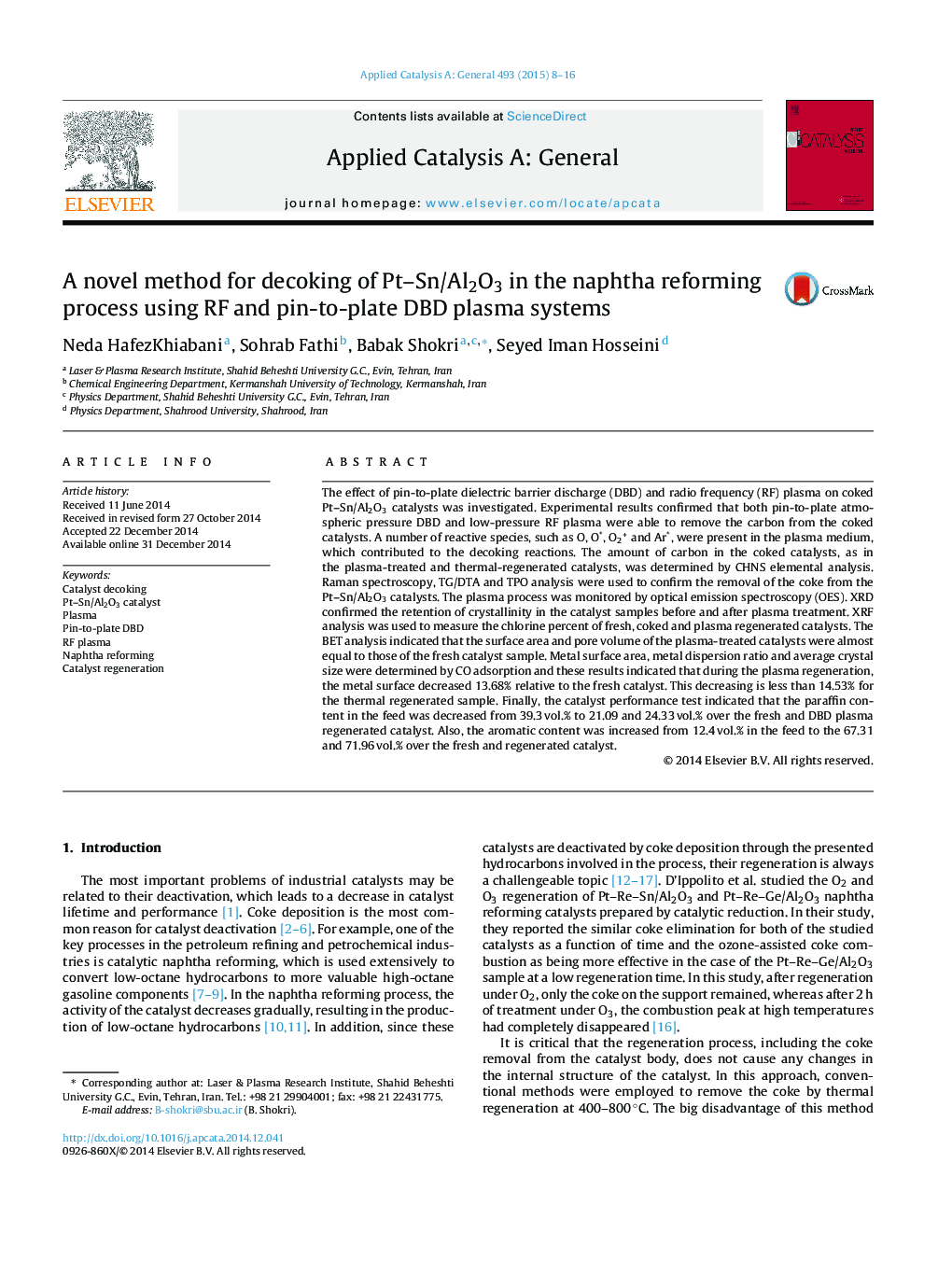| کد مقاله | کد نشریه | سال انتشار | مقاله انگلیسی | نسخه تمام متن |
|---|---|---|---|---|
| 39369 | 45821 | 2015 | 9 صفحه PDF | دانلود رایگان |

• Coke deposition is the most important reason of catalyst deactivation.
• DBD and RF plasma are effective in the regeneration of spent Pt–Sn/Al2O3.
• Plasma can regenerate catalysts in the low temperature and at shorter times.
• DBD plasma is more efficient relative to RF plasma in the regeneration process.
The effect of pin-to-plate dielectric barrier discharge (DBD) and radio frequency (RF) plasma on coked Pt–Sn/Al2O3 catalysts was investigated. Experimental results confirmed that both pin-to-plate atmospheric pressure DBD and low-pressure RF plasma were able to remove the carbon from the coked catalysts. A number of reactive species, such as O, O*, O2+ and Ar*, were present in the plasma medium, which contributed to the decoking reactions. The amount of carbon in the coked catalysts, as in the plasma-treated and thermal-regenerated catalysts, was determined by CHNS elemental analysis. Raman spectroscopy, TG/DTA and TPO analysis were used to confirm the removal of the coke from the Pt–Sn/Al2O3 catalysts. The plasma process was monitored by optical emission spectroscopy (OES). XRD confirmed the retention of crystallinity in the catalyst samples before and after plasma treatment. XRF analysis was used to measure the chlorine percent of fresh, coked and plasma regenerated catalysts. The BET analysis indicated that the surface area and pore volume of the plasma-treated catalysts were almost equal to those of the fresh catalyst sample. Metal surface area, metal dispersion ratio and average crystal size were determined by CO adsorption and these results indicated that during the plasma regeneration, the metal surface decreased 13.68% relative to the fresh catalyst. This decreasing is less than 14.53% for the thermal regenerated sample. Finally, the catalyst performance test indicated that the paraffin content in the feed was decreased from 39.3 vol.% to 21.09 and 24.33 vol.% over the fresh and DBD plasma regenerated catalyst. Also, the aromatic content was increased from 12.4 vol.% in the feed to the 67.31 and 71.96 vol.% over the fresh and regenerated catalyst.
Figure optionsDownload high-quality image (147 K)Download as PowerPoint slide
Journal: Applied Catalysis A: General - Volume 493, 5 March 2015, Pages 8–16